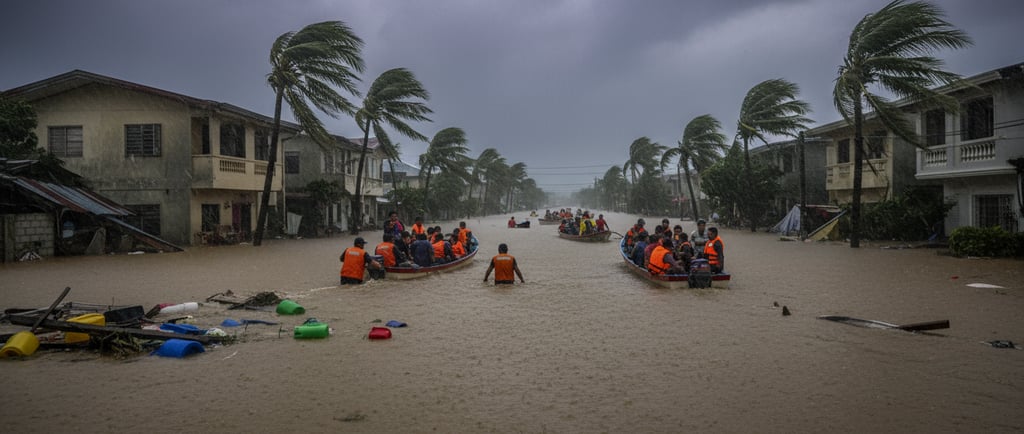MSM NEWS: The Impact of Typhoon Kalmaegi on the Philippines and Taiwan
Typhoon/Storm Kalmaegi in the Philippines and its impact on Taiwan Kalmaegi caused flooding, landslides, and dozens of deaths in the Philippines, displacing thousands. In Taiwan, authorities evacuated thousands and suspended classes in exposed areas. The event highlights the region's vulnerability to cyclones and the need for resilient infrastructure.
11/12/20252 min read


Introduction to Typhoon Kalmaegi
Typhoon Kalmaegi, having made its way through the Philippines, has left a trail of destruction characterized by severe flooding, landslides, and a heartbreaking loss of life. The aftermath of this cyclone reveals the vulnerabilities faced by both the Philippines and Taiwan, illuminating the urgent need for comprehensive disaster preparedness and resilient infrastructure in the region.
Consequences in the Philippines
The Philippines experienced the brunt of Typhoon Kalmaegi's wrath, which resulted in an alarming number of casualties and displaced thousands of residents. Reports indicate that dozens lost their lives due to the storm-related disasters, while entire communities were forced to evacuate from their homes. Flooding caused significant property damage, submerging homes and infrastructure, and landslides rendered several roads impassable, creating challenges for immediate rescue and relief efforts.
In addition to these devastating impacts on human life and property, agricultural sectors were also greatly affected. The torrential rains and fierce winds destroyed crops, adversely impacting the finances and food security of many families. As the nation grapples with recovery efforts, the path to rebuilding not only infrastructure but also the lives of those affected will require extensive support from both the government and the international community.
Response Measures in Taiwan
As Typhoon Kalmaegi approached Taiwan, governmental authorities preemptively implemented measures to safeguard the population. Thousands of residents were evacuated from high-risk areas, and schools were closed as a precautionary measure. The focus shifted towards ensuring public safety in the face of this imminent threat. Meteorological agencies around the region enhanced their forecasts and issued timely warnings to prepare residents for the anticipated conditions.
This proactive response underscores the significance of timely communication and preparedness strategies in mitigating the impacts of natural disasters. Further, it reflects Taiwan's commitment to disaster risk management, aiming to protect its populace from the adverse effects of cyclones like Kalmaegi.
Learnings and Future Considerations
Typhoon Kalmaegi has starkly illustrated the ongoing vulnerability of both the Philippines and Taiwan to cyclonic storms, necessitating a reevaluation of current disaster response protocols and infrastructure resilience. As climate change continues to elevate the risks associated with severe weather events, enhancing preparedness strategies and investing in resilient infrastructure must become paramount for these nations.
In conclusion, the impact of Typhoon Kalmaegi serves as a critical reminder of the dangers posed by severe weather. Both countries must unite in their efforts to strengthen disaster management frameworks and invest in technologies and strategies that can better withstand such natural calamities in the future. Collaboration among international partners may further bolster these efforts, ensuring a safer and more resilient future for the vulnerable regions impacted by cyclones.
MSM News
Follow news and analysis accurately.
All rights reserved MSM News © 2025.
Privacy Policy
Contact

